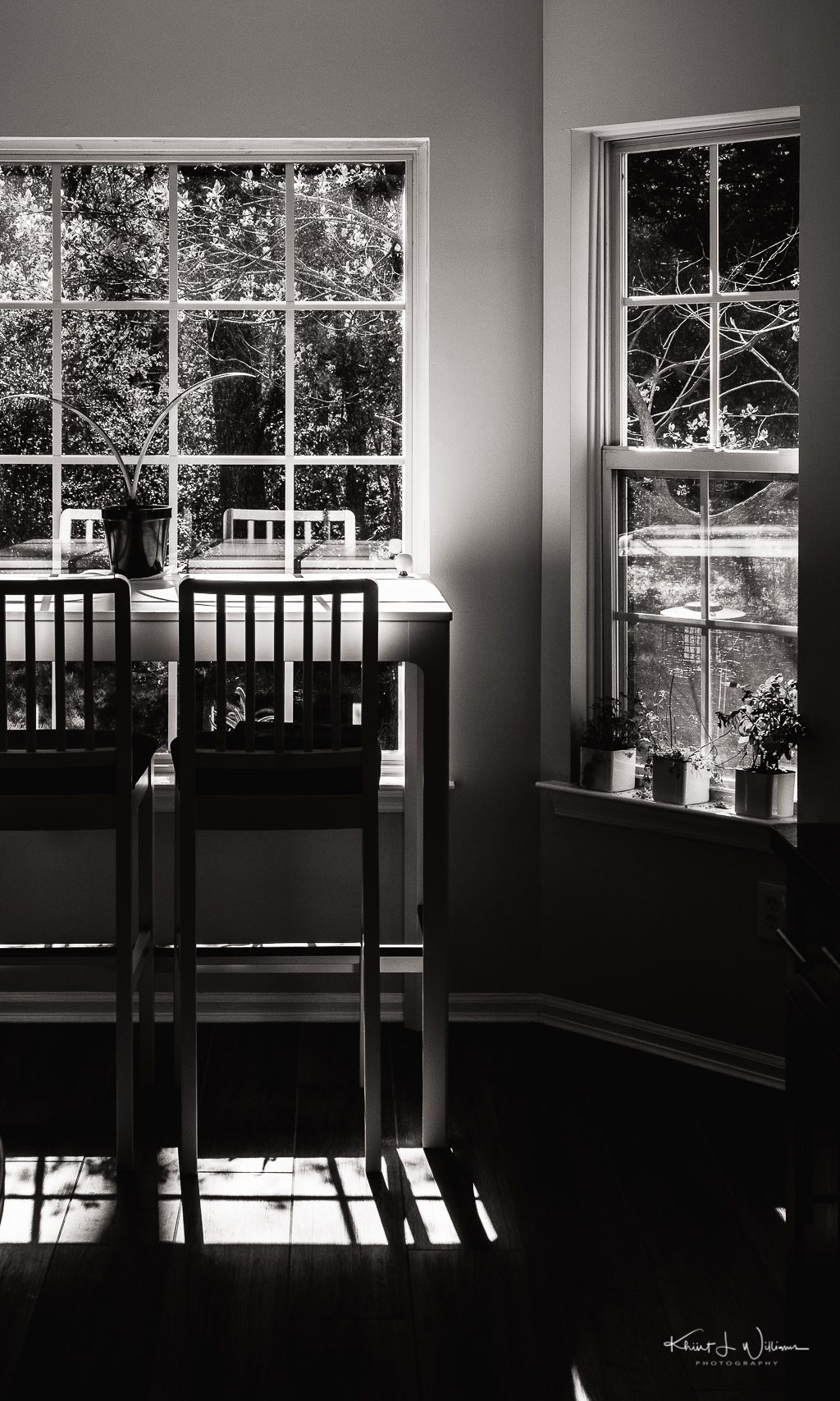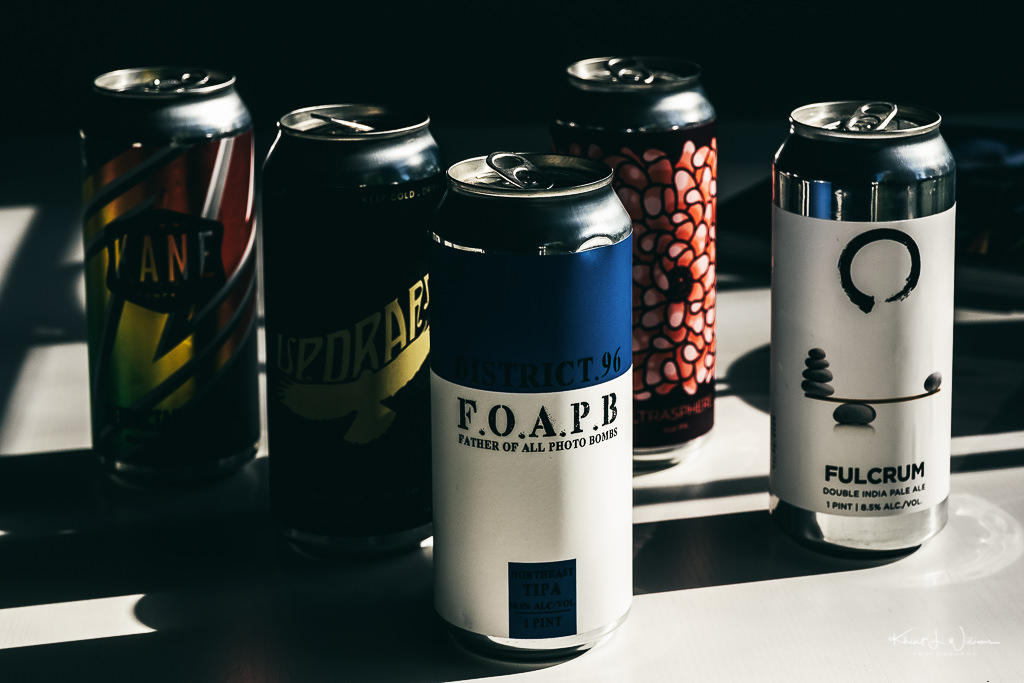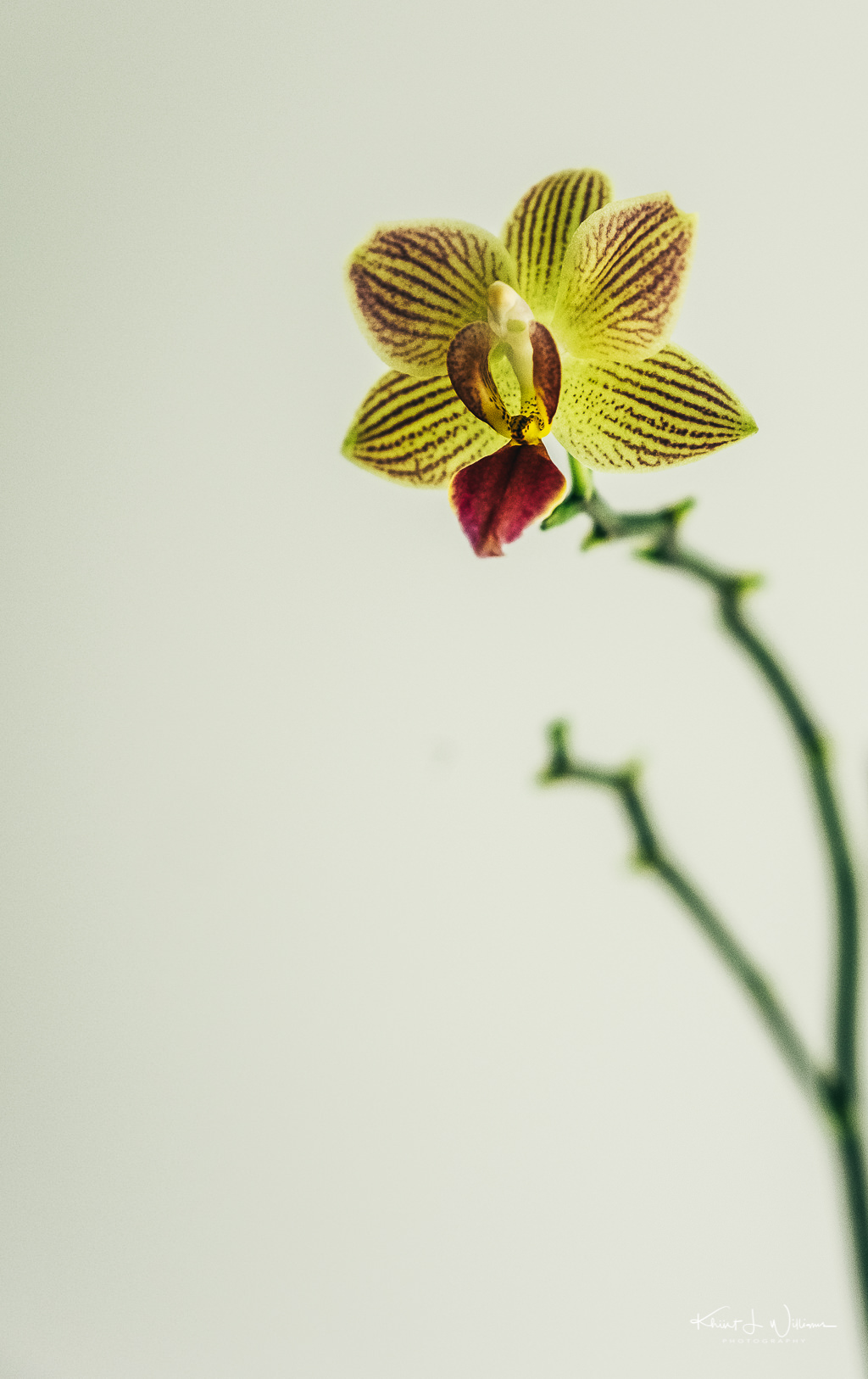This morning the weather has flipped back to spring. The sun is out, the skies are light blue, and a brisk breeze is stirring the leaves. A different sort of light is coming through the kitchen window. The brightness of the light made for strong shadows on the kitchen floor. It was begging to be photographed and given the Ilford "HP5 Style" treatment. I think shooting film is informing how I process my digital images.

I finished the roll of Film Photography Project RetroChrome 400 Color Slide Film by photographing the empty cans from last nights virtual happy hour under the morning light on the kitchen table near the window and the shadow cast by the trees in the backyard. I can't wait to send the roll to The Darkroom for developing.
In the meantime, I am continuing to experiment with Kevin Mullins' Adobe Lightroom Presets. The image below started with the "Mullins Film Colour Clean" preset, upon which I layered the "Real", "Subtle Warm", and "Raw Standard" sharpening presets.

Erin S. Bromage, PhD, an Associate Professor of Biology at the University of Massachusetts Dartmouth is a graduate of the School of Veterinary and Biomedical Sciences James Cook University, Australia where his research focused on the evolution of the immune system, the immunological mechanisms responsible for protection from infectious disease, and the design and use of vaccines to control infectious disease in animals. Dr Bromage is teaching a course this semester on the Ecology of Infectious Disease which focused on the emerging SARS-CoV2 outbreak in China. This week Dr Bromage wrote a lengthy and informative article explaining the genuine risks, backed by real science, of relaxing the COVID-19 related shelter-in-place restrictions too soon.
It seems many people are breathing some relief, and I’m not sure why. An epidemic curve has a relatively predictable upslope and once the peak is reached, the back slope is also predictable. Assuming we have just crested in deaths at 70k, that would mean that if we stay locked down, we lose another 70,000 people over the next 6 weeks as we come off that peak. That's what's going to happen with a lockdown.
As states reopen, and we give the virus more fuel, all bets are off. I understand the reasons for reopening the economy, but I've said before, if you don't solve the biology, the economy won't recover.
There are very few states that have demonstrated a sustained decline in numbers of new infections. Indeed, the majority are still increasing and reopening. As a simple example of the USA trend, when you take out the data from New York and just look at the rest of the USA, daily case numbers are increasing. Bottom line: the only reason the total USA new case numbers look flat right now is because the New York City epidemic was so large and now it is being contained.
Bhavna and I are having a late-night after watching Vin Diesel's latest science fiction action movie, Bloodshot. Anyone familiar with Vin Diesel movies (I love the Fast & The Furious franchise) will know what's coming and will find this movie entertaining or fall asleep1. I was entertained.
Submitted as part of the 100DaysToOffload project.- For comparison, I fell asleep while watching Star Wars: The Rise of Skywalker in the theatre in the middle of the day. I may have to rewatch that one. I understand there was a controversial kiss. ↩

